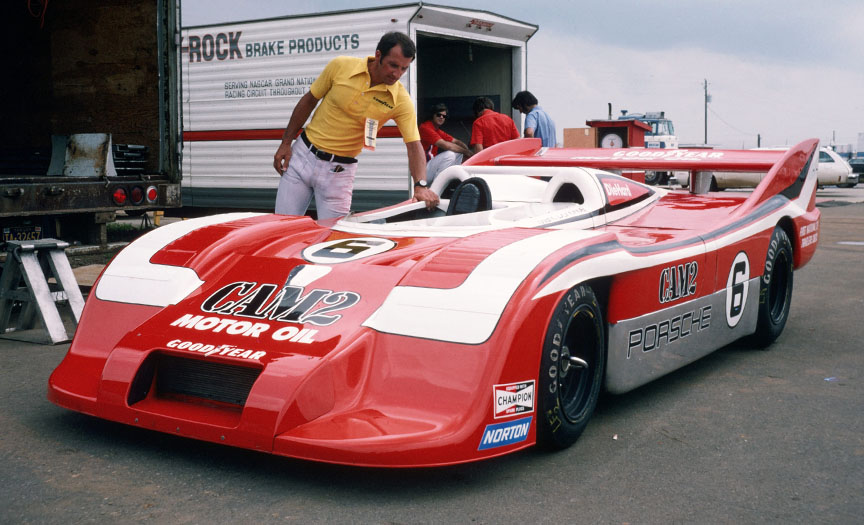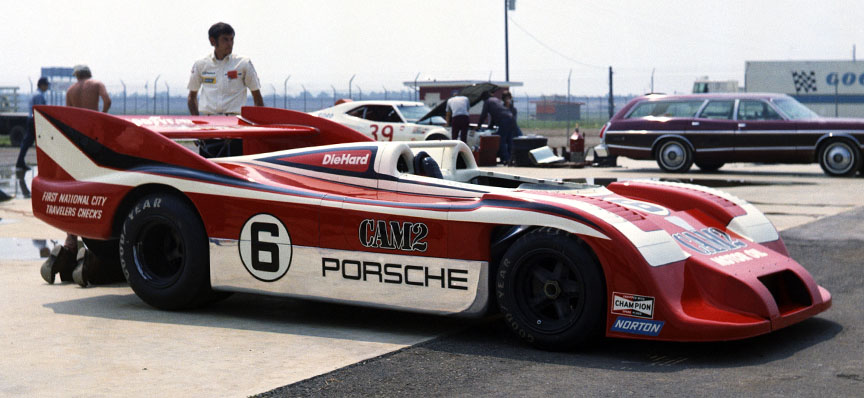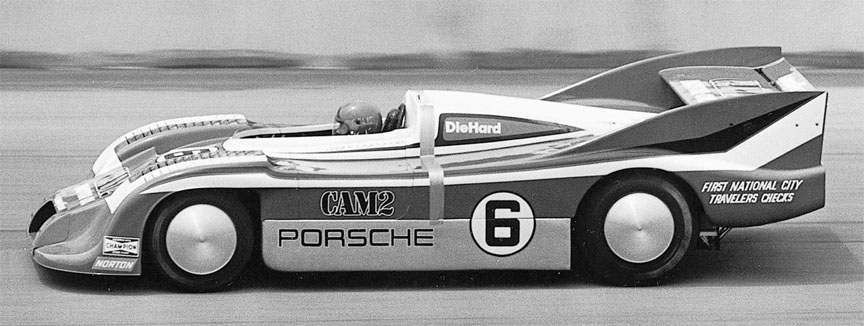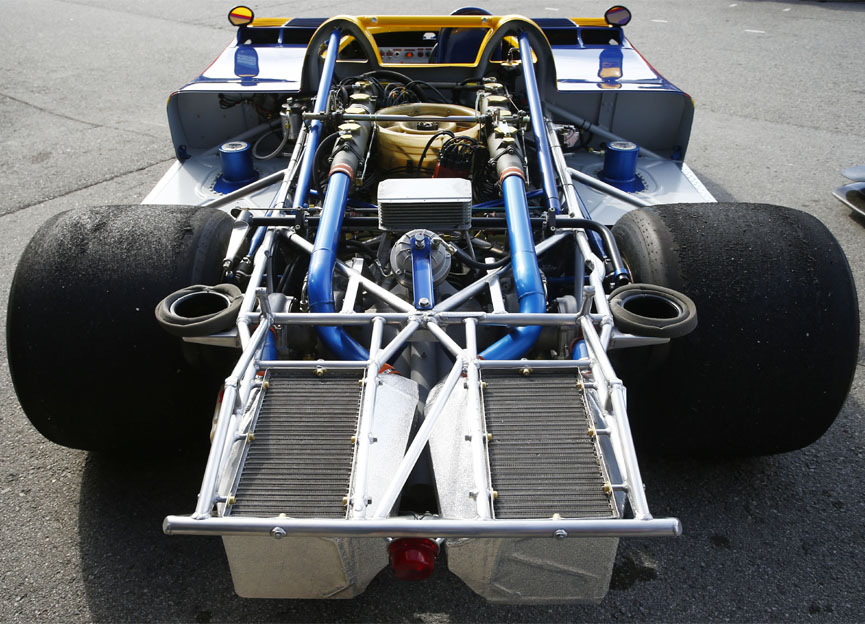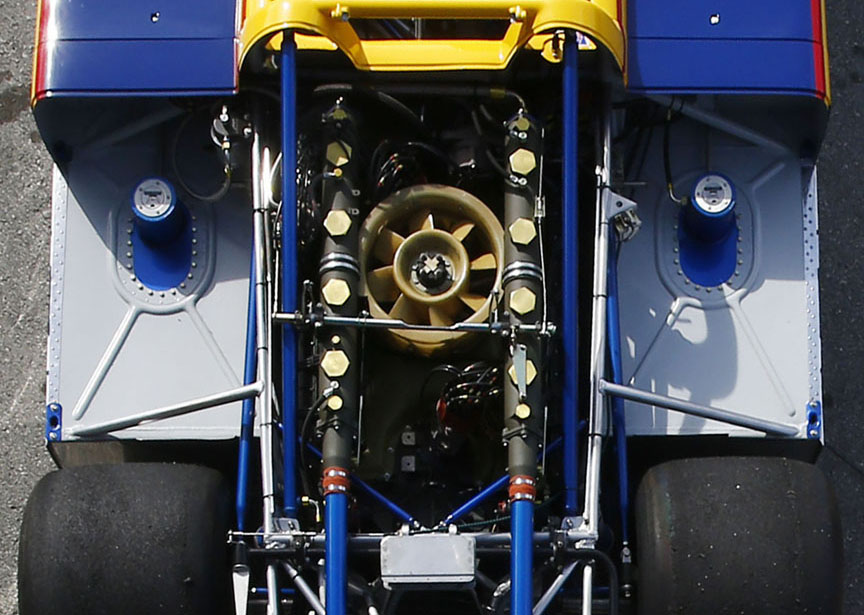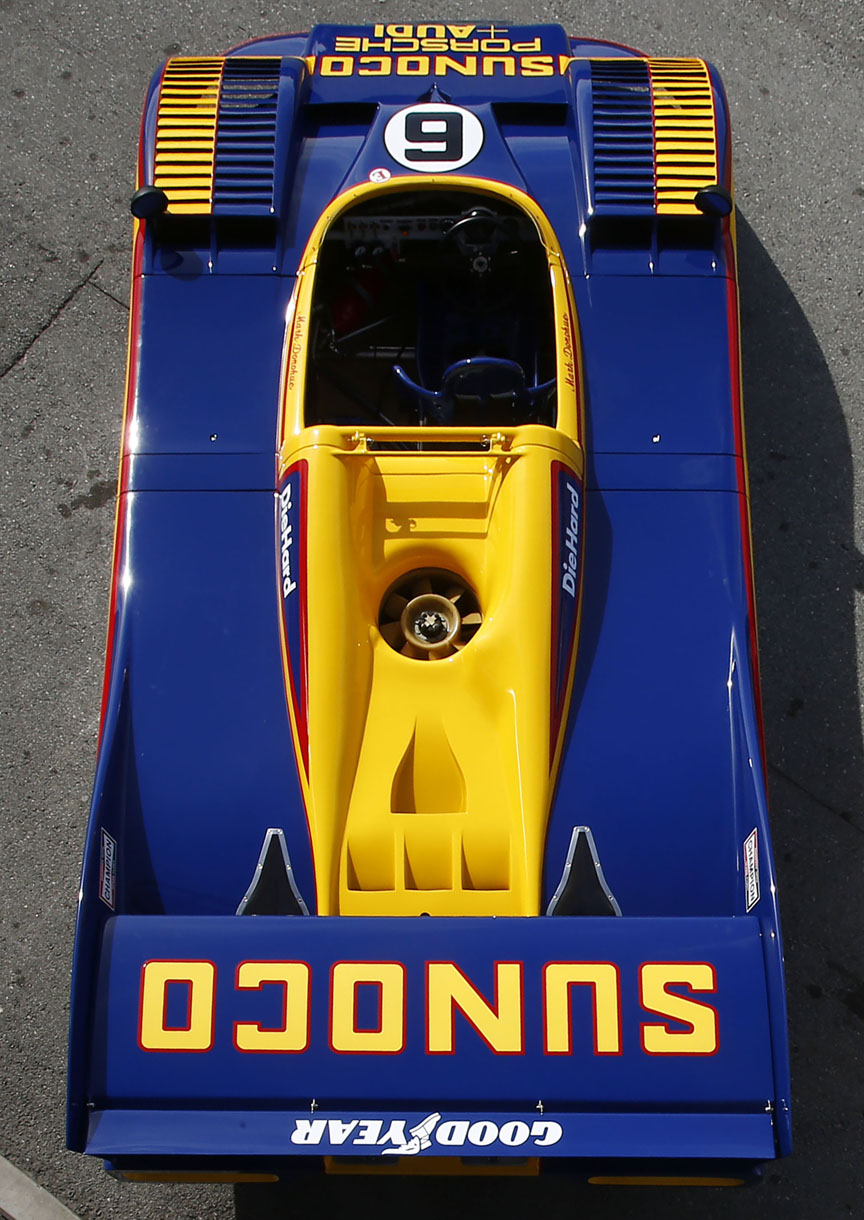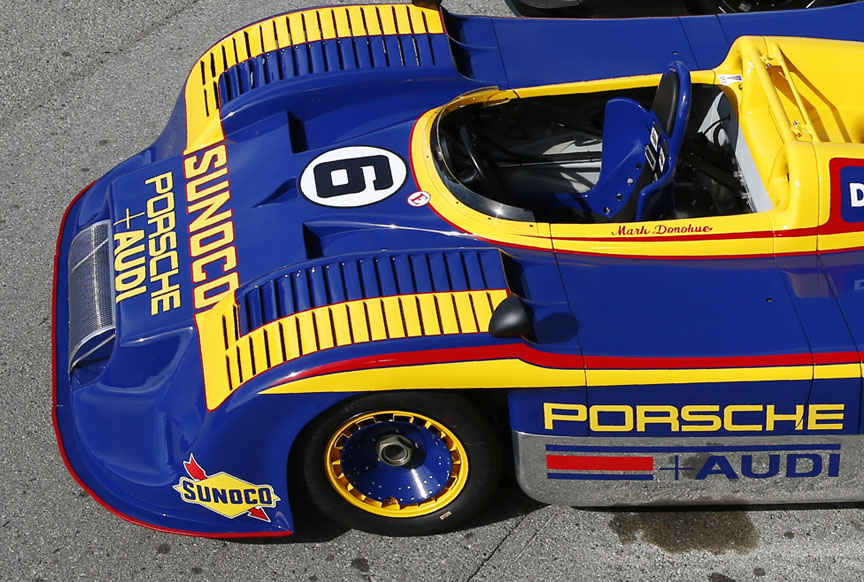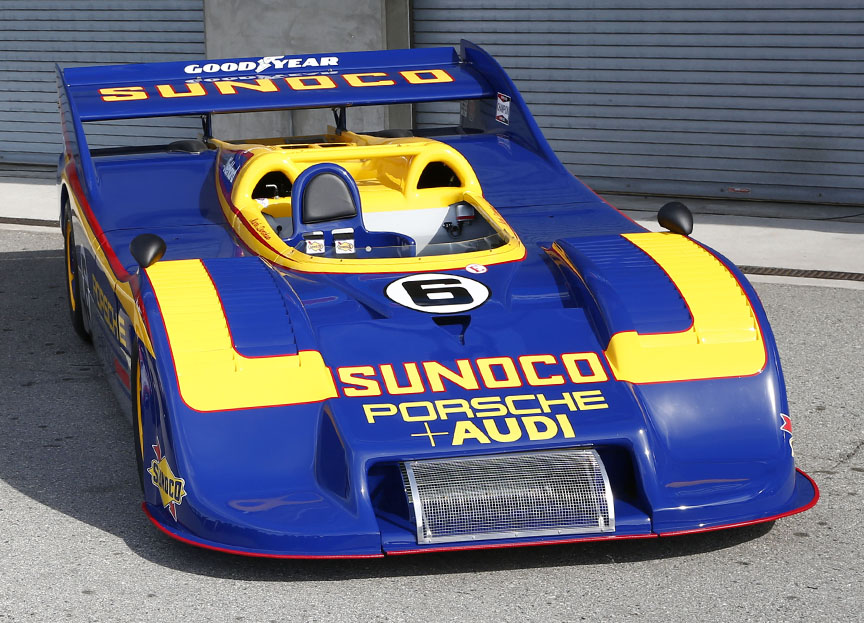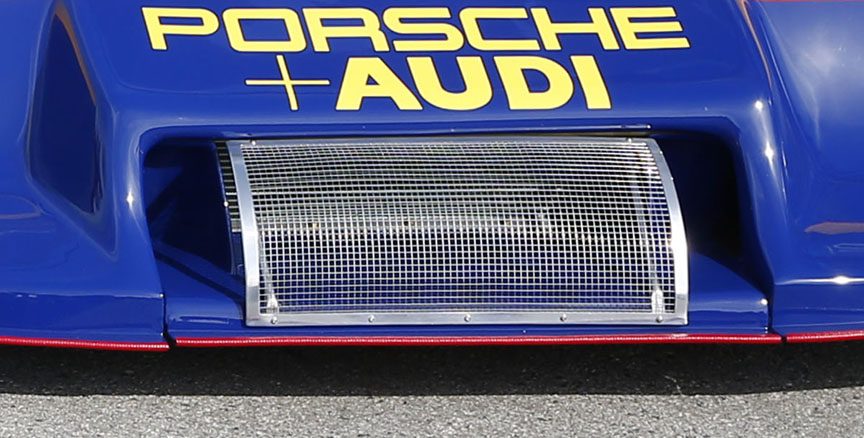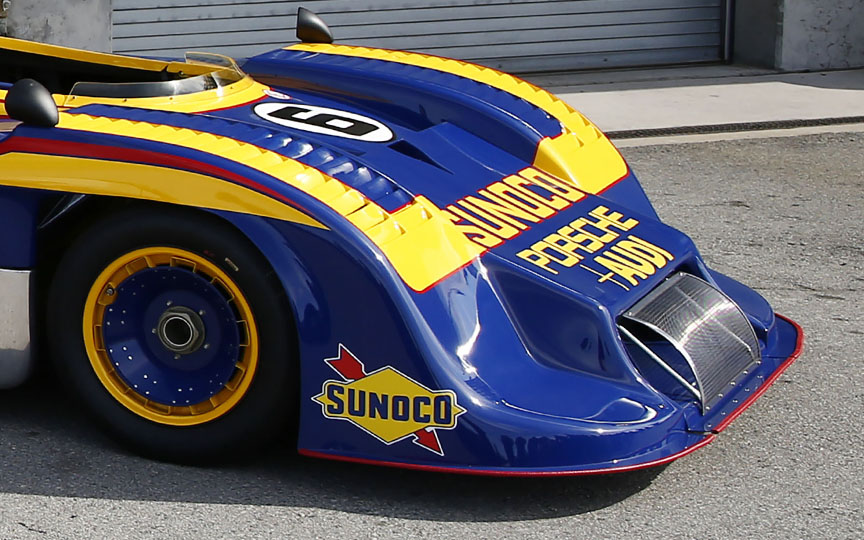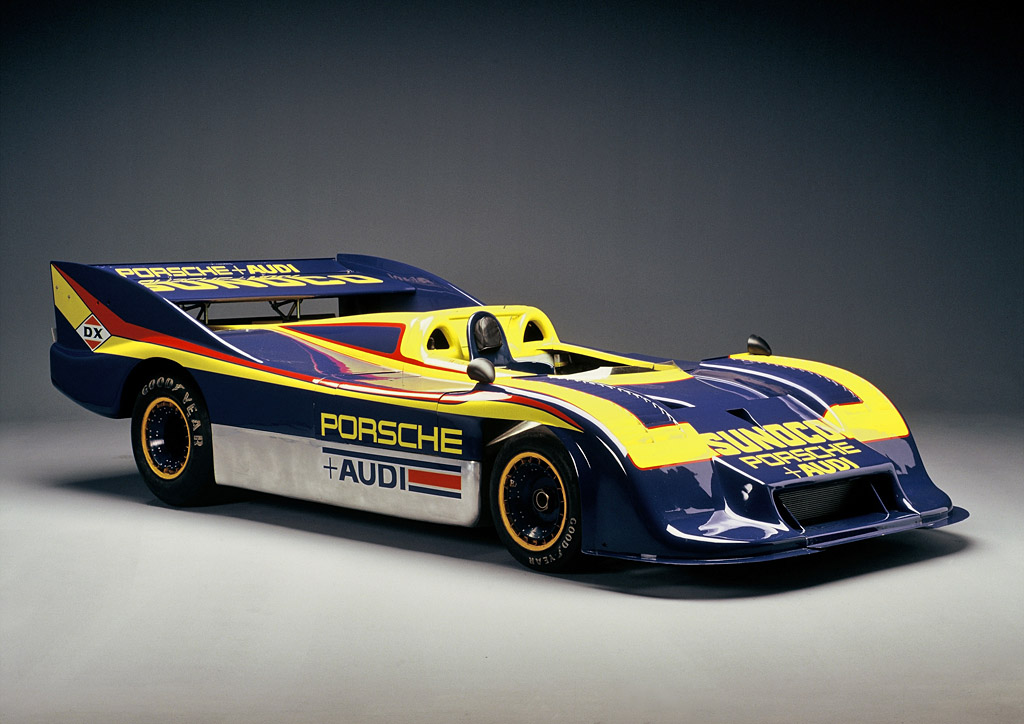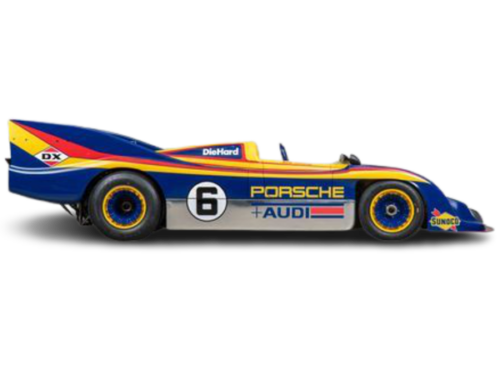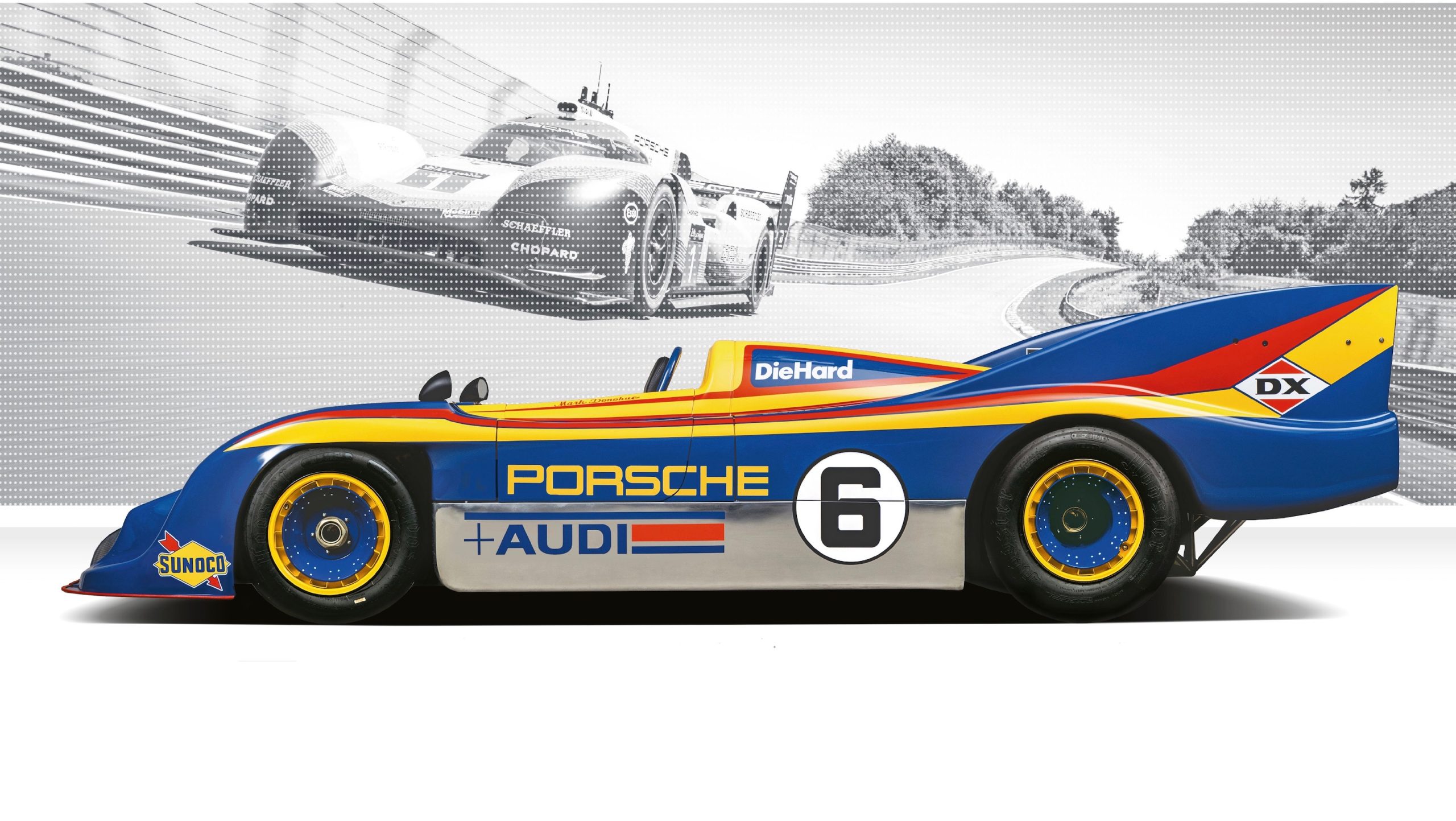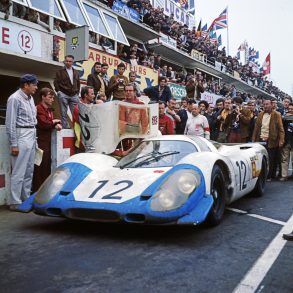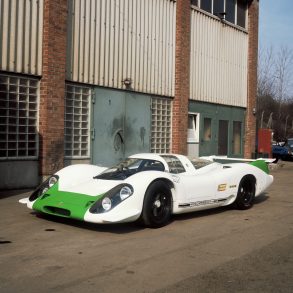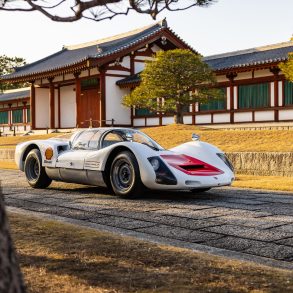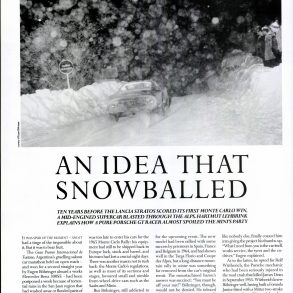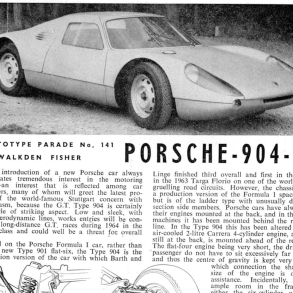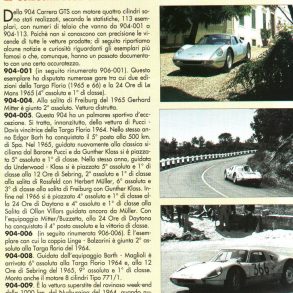Porsche 917/30 Spyder (1972 – 1973)
Porsche 917/30 Can-Am
Premiere: 1973 June 6 at Can-Am Mosport / Achievements: 1973 Can-Am winner, 1975 world speed record on closed course
Rule changes for the World Championship of Makes eliminated the stunning Porsche 917 during the early 1970s allowing the factory to develop the car for the open-top Canadian-American (CanAm) Championship in North America. Teams from McLaren, Lola and Chaparral were attracted to the 200 mile Sprint races of the formula and the rule book permitted almost anything, including free engine displacement and the use of turbochargers. Porsche used its new-found skills with forced induction to attach two exhaust-driven turbochargers to the flat-twelve engine of the 917. The result had a displacement of 5.4 litres and produced at least 1,100 bhp, making it one of the most powerful racing cars ever built.
The 917/30 went on to dominate in the 1973 CanAm with the top four places in the final points being taken back to Stuttgart and Porsche factory driver, Mark Donohue, setting a closed circuit record of 222 mph (355.85km/h) around the Talladega Oval, Alabama. A time that still ranks as one of the fastest race laps ever.
In Porsche’s Own Words (1972)
In November 1972, the first 917/30 with chassis number 001 is created as a test vehicle for the Can-Am racing series. What makes this test vehicle special is its adjustable space frame that is designed for different wheelbase sizes. After the first test drives on the practice circuit in Weissach, the car completes wind tunnel testing at the University of Stuttgart and further test drives on the Paul Ricard circuit in Le Castellet in the south of France.
It becomes apparent during testing that a longer wheelbase is advantageous, so the wheelbase is made 184 mm longer than the 917/10, for a total length of 2,500 mm. Soon after, Vic Elford wins on the car’s first outing at the Interserie race in Hockenheim on 15 July 1973. A year later the 917/30-001 wins five out of six Interserie races: Swiss driver Herbert Müller wins four races while Finnish driver Leo Kinnunen secures the fifth victory. Müller achieves another first place with the car at the Interserie opening race in Hockenheim in 1975.
Just before the launch of the “50 years of 917” special exhibition in 2019, the 917/30-001 is exhibited in newly restored condition, featuring the livery of its 1975 sponsor, central heating manufacturer Vaillant.
In Porsche’s Own Words (1973)
In 1972, Porsche is the only manufacturer to deploy turbo engines on the angular circuits of the Can-Am Championship; it wins the title by a wide margin with the 917/10.
Porsche gets the 1973 season off to a blistering start with the 917/30 Spyder. Its 5.4-litre twelve-cylinder twin turbo engine delivers up to 1,200 PS, sprinting to 200 km/h in 5.4 seconds and hitting 300 km/h after approximately 11 seconds. Compared to the 917/10, the wheelbase is lengthened by 184 mm to 2.5 m for increased stability.
In 1973 Porsche wins all eight races and the championship. The 917/10 secures the first two wins, while the other six are won by American driver and engineer Mark Donohue in the 917/30, competing for the Penske Racing Team sponsored by Sunoco and Porsche + Audi. Donohue completes the fastest laps in every race. In 1975 Donohue sets a new world record for closed-course speed at the Talladega Superspeedway in Alabama. He reaches an average speed of 355.848 km/h in the sister car to the 917/30.
Prior to the race, the twelve-cylinder’s power output had been specially increased to 1,230 PS to achieve these speeds.
The Full Story
The final evolution of the 917 was created after Ferdinand Piëch had left the Porsche company in 1972. Two complete 917/30 Can-Am cars with 2500 mm (98.4″) wheelbase were made for Roger Penske Enterprises racing team. They were chassis 917/30-002 and 003. The 001 car was not a real 917/30 and was raced in Europe at the Interserie. The Can-Am 917/30 had a 5.4-litre flat 12-cylinder twin-turbo engine which produced so much power that nobody really knew how much. Mark Donohue has said: “It’s the only car I’ve ever driven that can spin the tires at 200 mph.” Comments are excessive.
Engine
| Year | Type | Engine | Power |
| 1973 | Racing Engine | 5.4 L Flat 12 twin-turbo without intercoolers | 1085 bhp |
| 1975 | Top Speed Engine | 5.0 L Flat 12 twin-turbo with intercoolers | 1212 bhp |
The 917/30 was the most powerful racing sports car ever created and so unbeatable, it is known for having its share in killing the Canadian-American Challenge Cup’s popularity. In 1973 Porsche won all the Can-Am races and 6 out of 8 with the 917/30. In October 1973 the oil crisis started resulting in fuel prices going up four times in half a year. Porsche had already created three more chassis for the 1974 season, but the cars were not completed as Porsche didn’t participate in the new season. The 1974 Can-Am championship was terminated before the last race of the season.
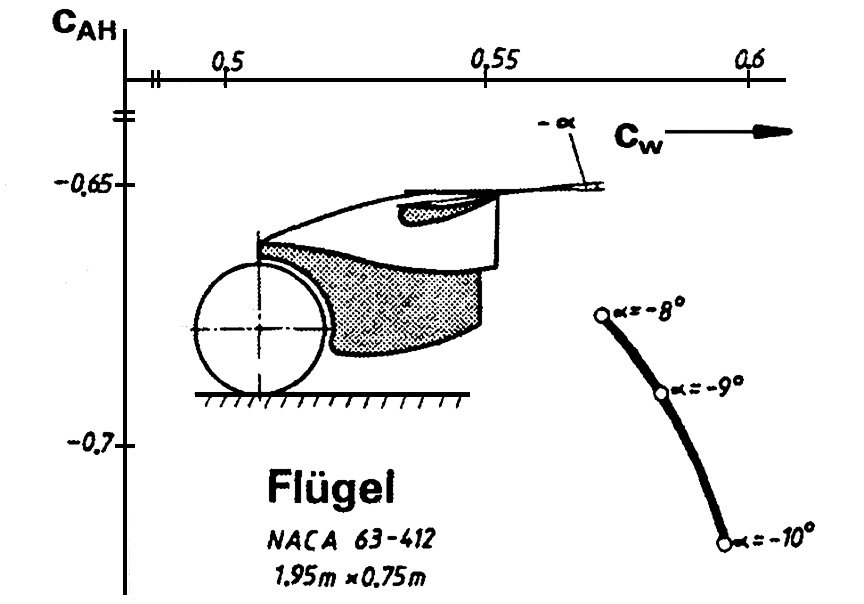
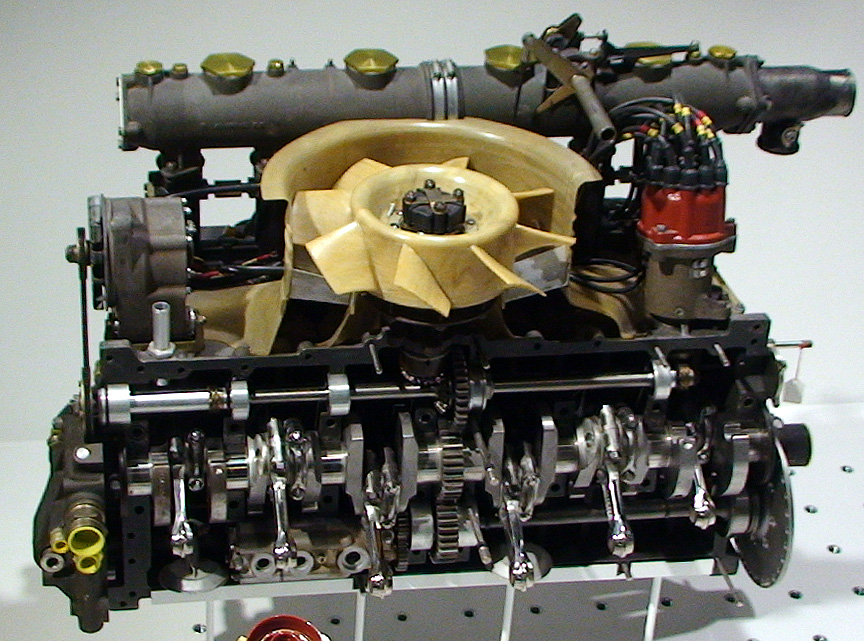
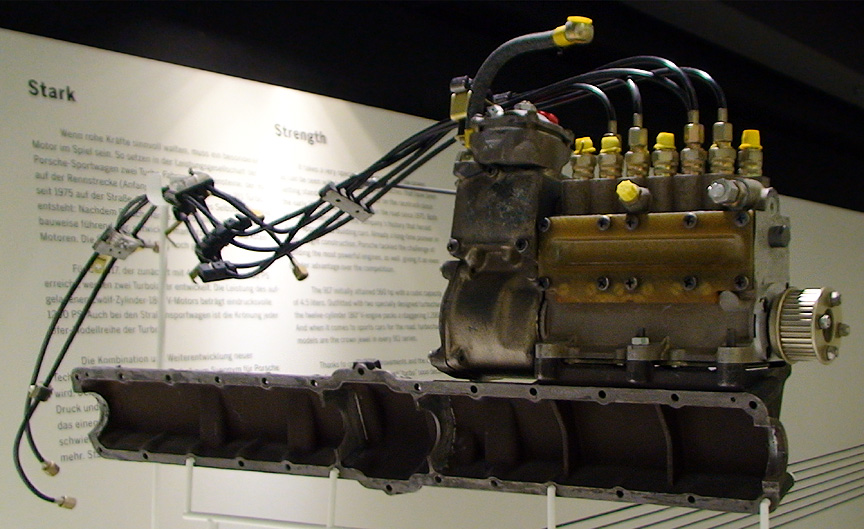
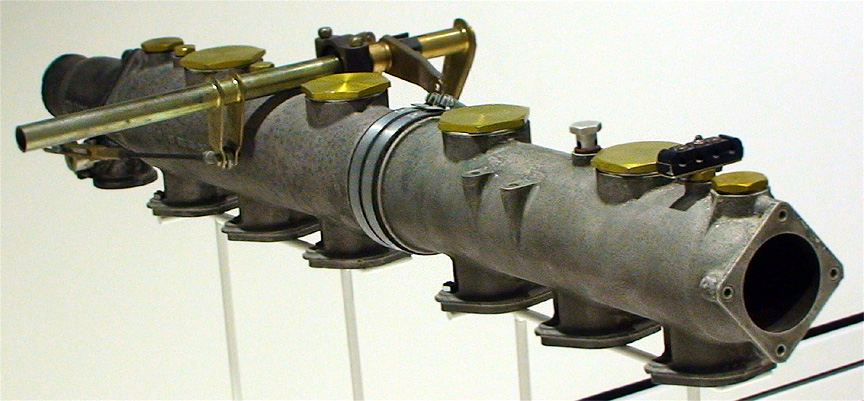
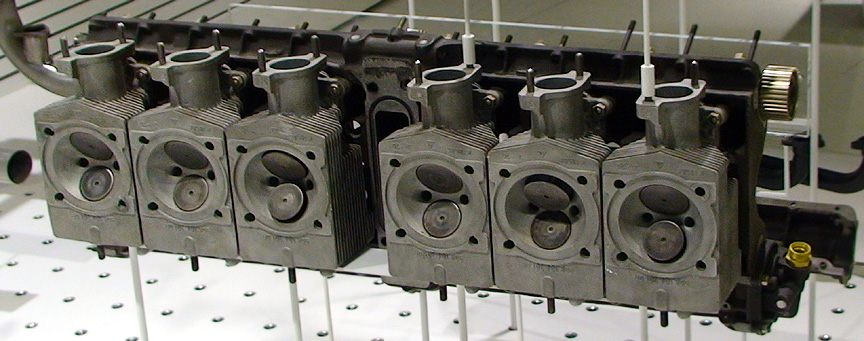
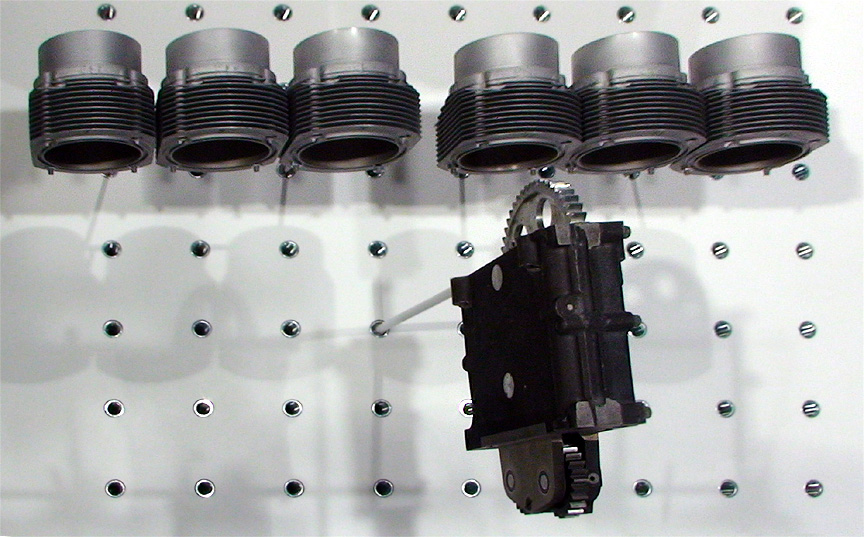
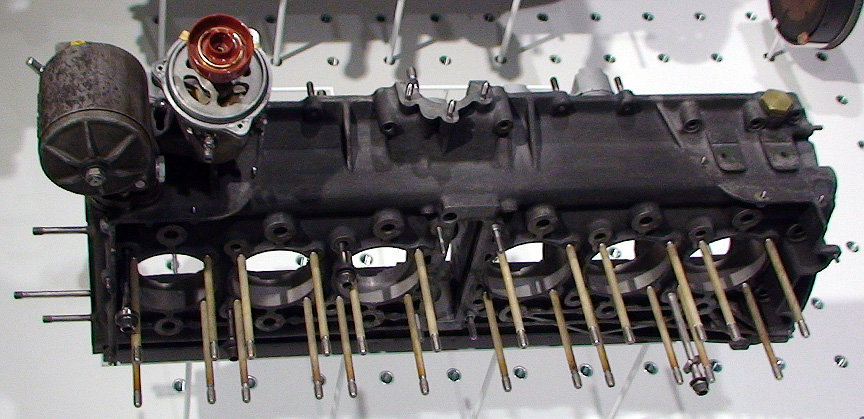
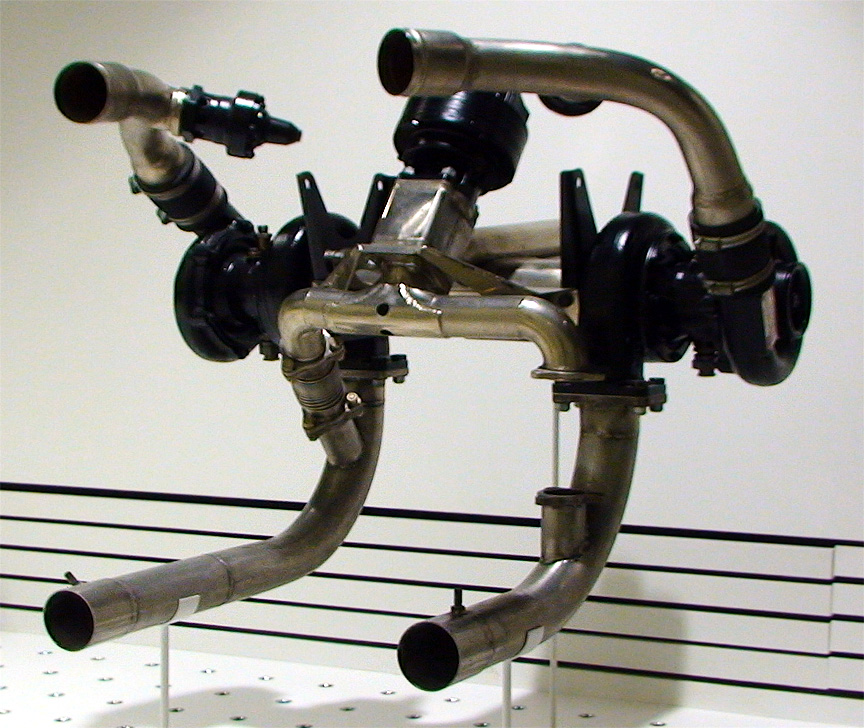
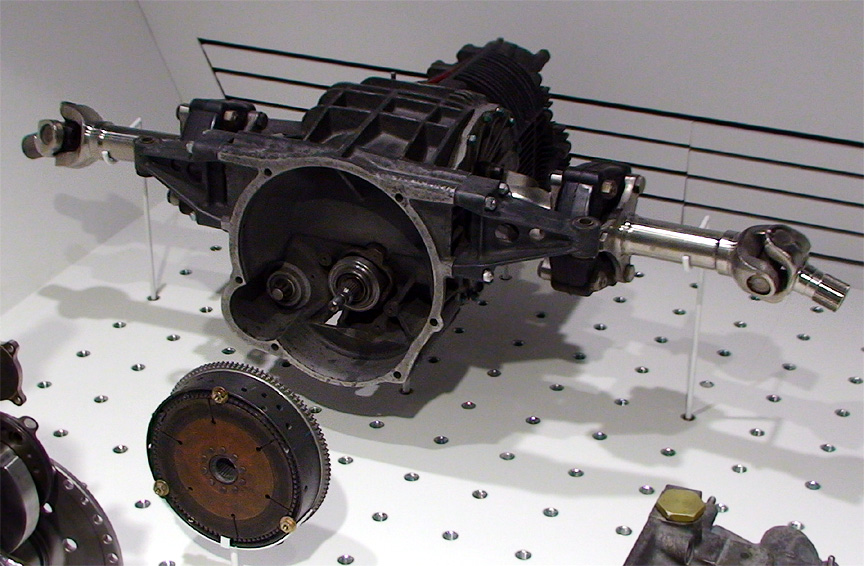
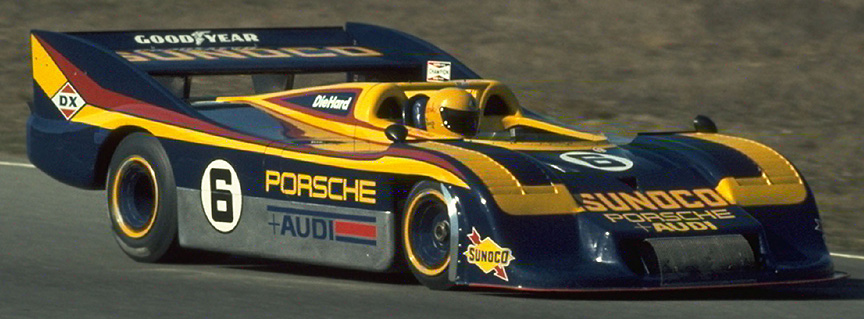
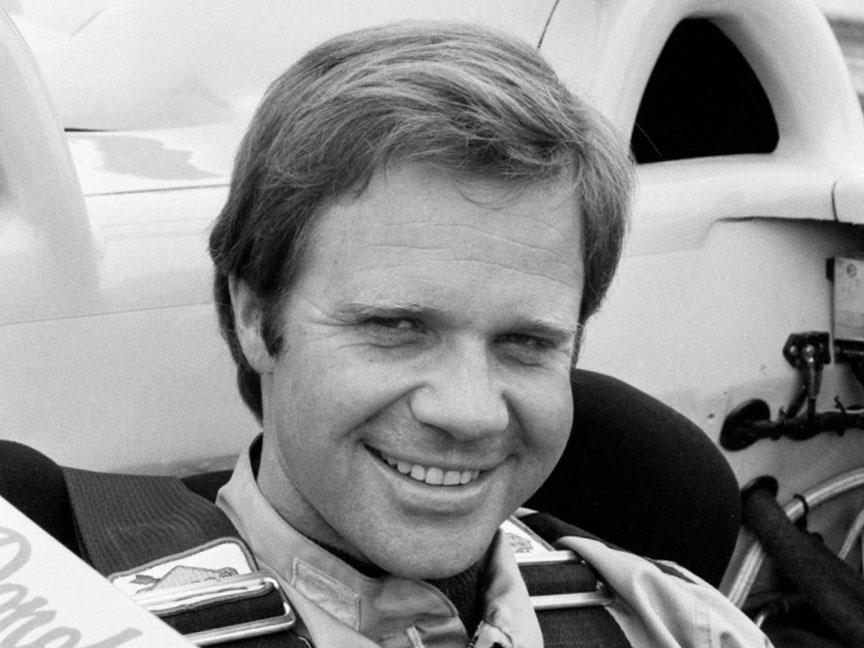
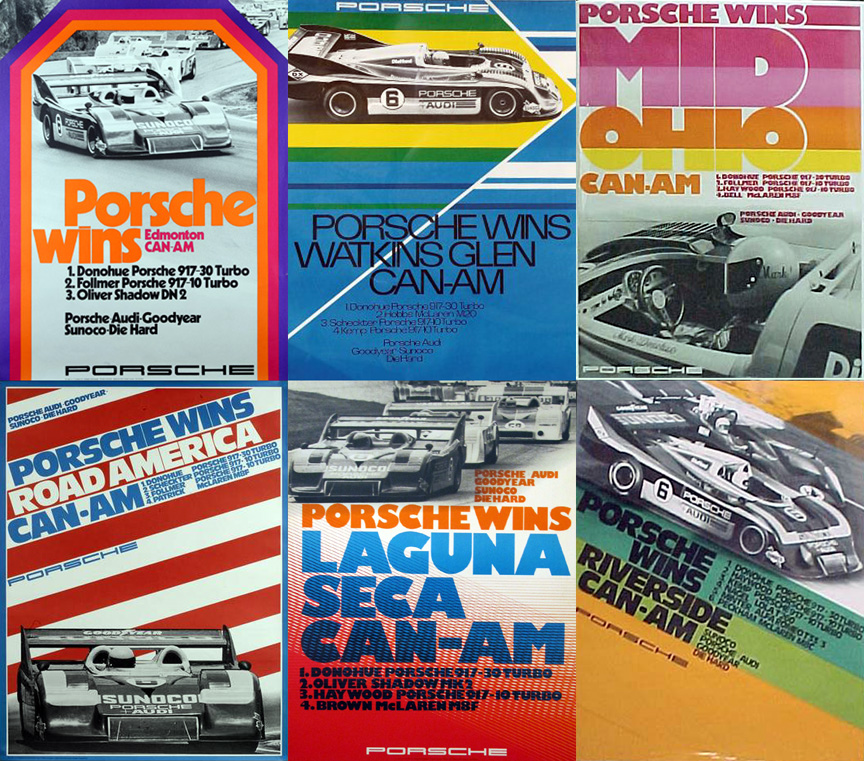
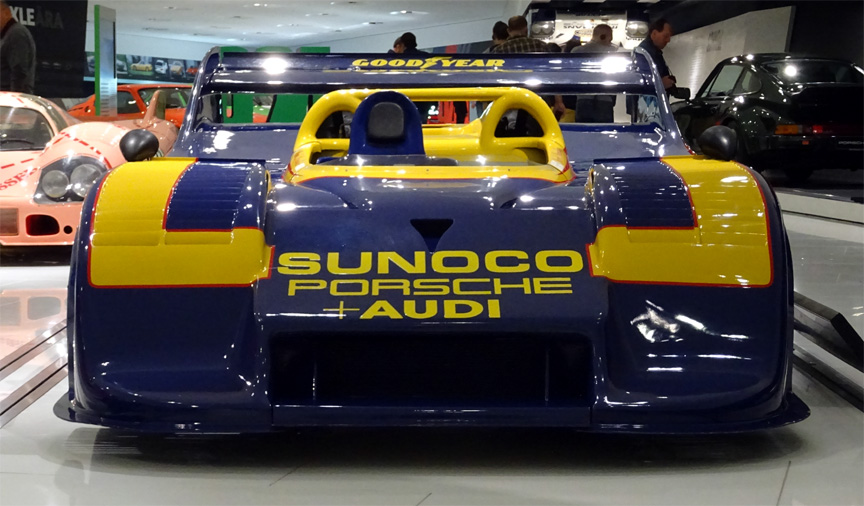

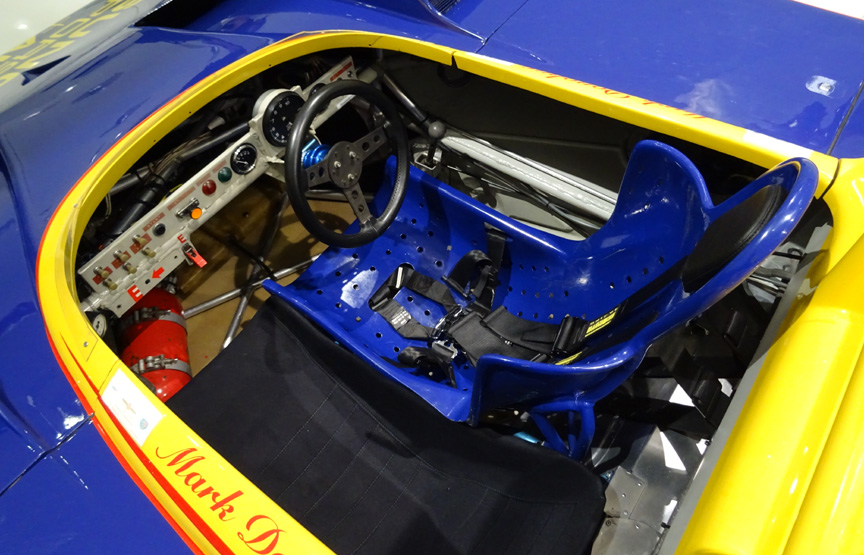
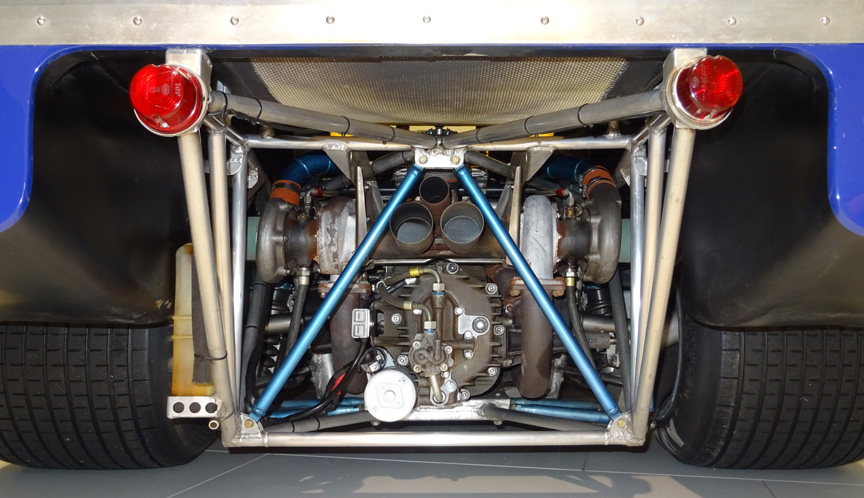
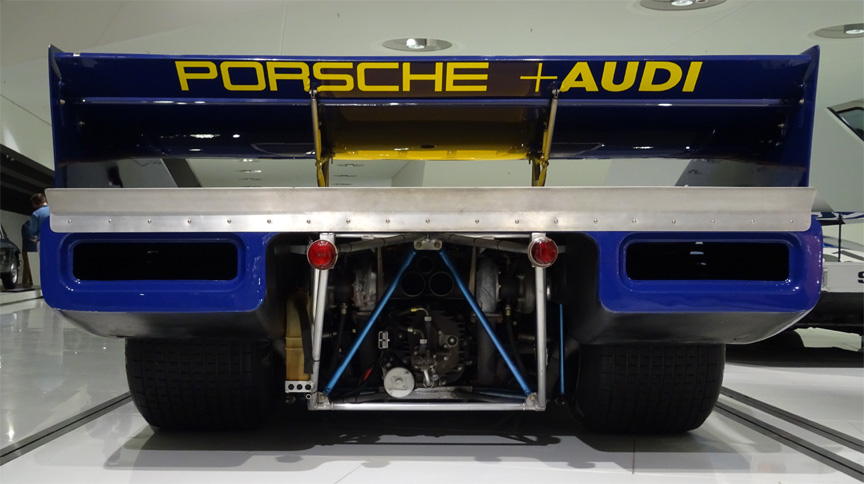
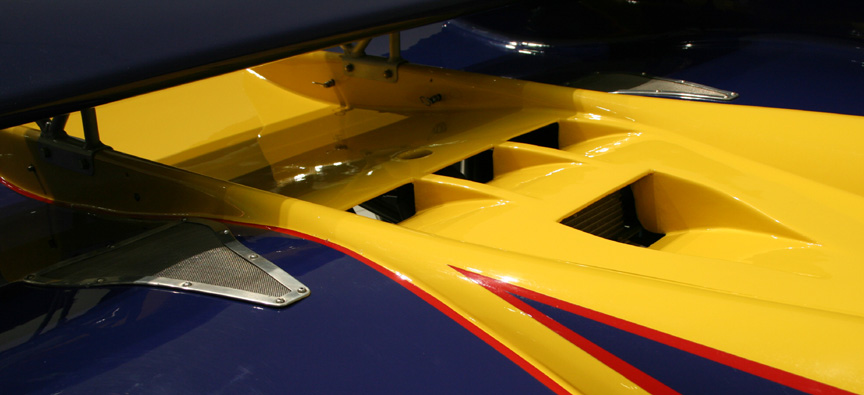
1975: Intercoolers and Closed-Course Speed Record
In 1975 the 917/30 was assigned its final task – to brake the closed-course world speed record. When Mark Donohue took the 5.4-litre 917/30 for a series of test drives on the oval at Daytona Beach in January, it became apparent that the engine was not stable enough for flat-out driving. Following discussions with Porsche technicians around engineer Helmut Flegl, the decision was taken to use the more reliable 5.0-litre engine. Despite the smaller engine capacity, thanks to charge-air intercoolers the power was bumped to 1230 hp. Porsche performed 120 second full-throttle test bench inspections before agreeing with Donohue that the company would pay for any material damage that might occur during the record attempt.
In addition to the engine and small aerodynamic modifications, the springs were replaced and the chassis was altered to ensure that the car pulled to the left when driving on the straights. This adjustment done to any oval-circuit racer makes the car more stable at the corners. The record braking car was sponsored by CAM2 motor oils and was painted red instead of earlier Sunoco-blue.
On August 9, 1975, on the Talladega Superspeedway in Alabama Mark Donohue managed to lap the track in 43.3 seconds with average speed of 221 mph/356 km/h. During the attempt, the absolute maximum speed reached was 237 mph/382 km/h.
It should be mentioned here that in 1975 Donohue was doing his first full season in Formula 1 and died in Austria into head injuries (in addition to killing a marshal) 10 days after he had set the speed record at Talladega.
The top speed record car was later painted back to its dark blue and yellow Can-Am livery.
